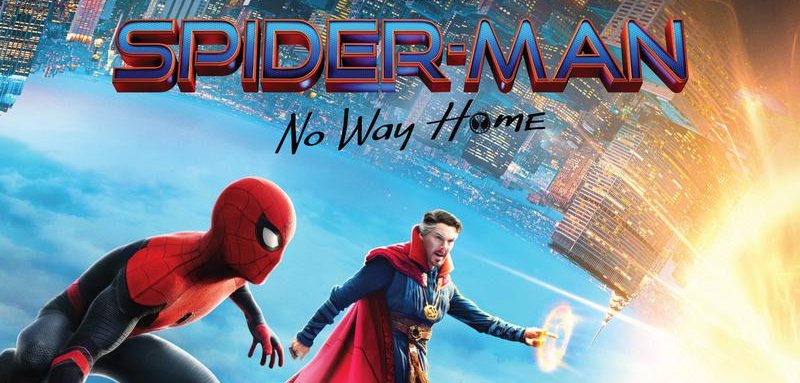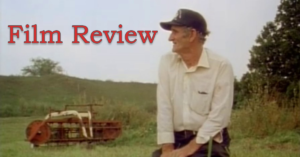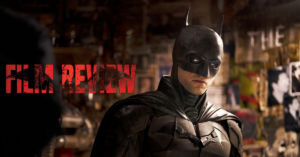⭐⭐⭐⭐
Rating: 3.5 out of 5.Director Jon Watts and writers Chris McKenna and Erik Sommers succeed with No Way Home in a careful balancing act that others have failed at with past Spider-Man series. Sony’s ambition for a new cinematic universe to rival Disney’s MCU fizzled after the launchpad, The Amazing Spider-Man 2 (2014), was criticized for its overcrowded narrative and villainous line-up.
It echoed the visceral reception towards indie-master Sam Raimi and his 2007 entry, Spider-Man 3 (which I don’t think is as bad as everyone remembers it to be); both were burdened with a juggling act of villains they couldn’t sustain. Dare I say: too much “responsibility” rested on their shoulders to further the web-slinger franchise.
When I found out No Way Home was going to revisit familiar faces from across the multiverse after the cliffhanger ending, I was genuinely surprised…and worried—worried that Marvel would retread the failings of Sony’s Spider-Man 3 (2007) and The Amazing Spider-Man 2 (2014).
I feared No Way Home would falter the same way. Thankfully, I was (partially) wrong.
Picking up where the last movie left off, Peter is publicly unmasked and painted as a murderer by the constant agro-journalism done by J. Jonah Jameson (J.K. Simmons), thanks to edited footage from Mysterio (Jake Gyllenhaal). The first 5-10 minutes are spent watching Peter navigate his new situation, trying to move forward with his life as he faces both the legal system and the court of public opinion.
Though eventually cleared of all legal charges, the negative publicity affects Peter, MJ (Zendaya), and Ned’s (Jacob Batalon) admission into MIT, effectively canceling them by association. Knowing he has to take responsibility for what has happened (the first step into the more significant issue), Peter turns to ally/reluctant mentor Doctor Strange (Benedict Cumberbatch) to solve his crisis using magic. Surprise, surprise, there’s a spell that can make people forget things; how convenient!
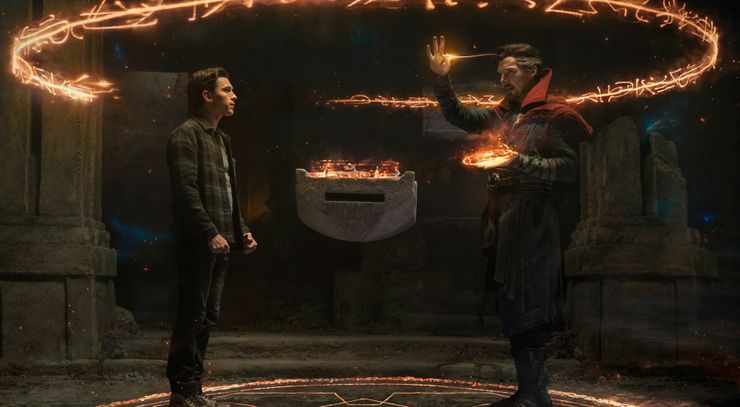
But Peter’s request for specifics on who can remember his secret identity ruins the spell-casting, unleashing multiversal threats as the good doctor fights to keep the failed spell contained. Now, anyone who knows that Peter Parker is Spider-Man in other universes is being brought over, wreaking havoc on the time-space barrier (which gets into the concept of Marvel’s animated What If…? series and the greater Multiverse). That’s how villains from alternate worlds, Doctor Octopus (Alfred Molina), Electro (Jamie Foxx), Green Goblin (Willem Dafoe), Sandman (Thomas Haden Church), and the Lizard (Rhys Ifans) all appear and clamor for a way to return to their times.
Returning director Jon Watts, alongside screenwriters Chris McKenna and Erik Sommers, wrestle with the inherent nostalgia factor of bringing back actors from those past series and its a tough answer as to who came out on top.
If you had to predict which element would fall to disaster, the obvious answer is the reintroduction of five villains from those past two franchises. However, the screenwriters, Chris McKenna and Erik Sommers handle the antagonists’ appearance with amazing (hehe) skill.
And at times, No Way Home does falter. Some of the jokes don’t land, as has become the norm for Marvel (dare I say they had a… strange delivery). Examining the logic that pushes the villains to MCU Spidey’s alternate universe irks the brain. Still, I’m game enough to chalk it to a soft reboot, a slight alteration to inter-movie canon to make this story run with less complication.
It delivered on It made me forget I was on a nostalgia trip, reliving my best memories of the past Spider-Man franchises, led by Tobey Maguire and Andrew Garfield, and combining them with the all-new, all-different MCU Spidey, played by Tom Holland.
The premise of revisiting familiar faces across the multiverse is enticing, especially hot off the heels of the timeline exploration in the Disney+ series Loki.
But the use of callbacks was a point of concern for me since it could easily tilt into full-on fan service, a concern that was (almost) unrealized.
Sure, the multiversal appearances and long-rumored cameos were a plus, but it was an extra sprinkle on top of the more engaging plot compared to recent MCU entries. In what I thought would be yet another ill-fated juggling act of villains, thematic exploration, and character arcs, I felt that there was a carefully calculated balance for all of those features.
A balance that previous iterations of the web-slinger, Spider-Man 3 (2007) and The Amazing Spider-Man 2 (2014), failed to create. Both films struggled to motivate multiple villains against our hero, exhausting the story and our attachment to the character of Peter Parker/Spider-Man. In the case of The Amazing Spider-Man 2, they fell victim to their ambition to launch a new cinematic universe; their haste to set up spin-off properties caused “Sony’s Spider-Man Universe” to crumble before it even had a leg to stand on.
With the trailers indicating that we would revisit some familiar faces, I was worried that Marvel would retread Sony’s blunders. A multiversal twist is exciting but could’ve been an unnecessary weight on what the cliffhanger ending Far From Home (2019) left us with. Thankfully
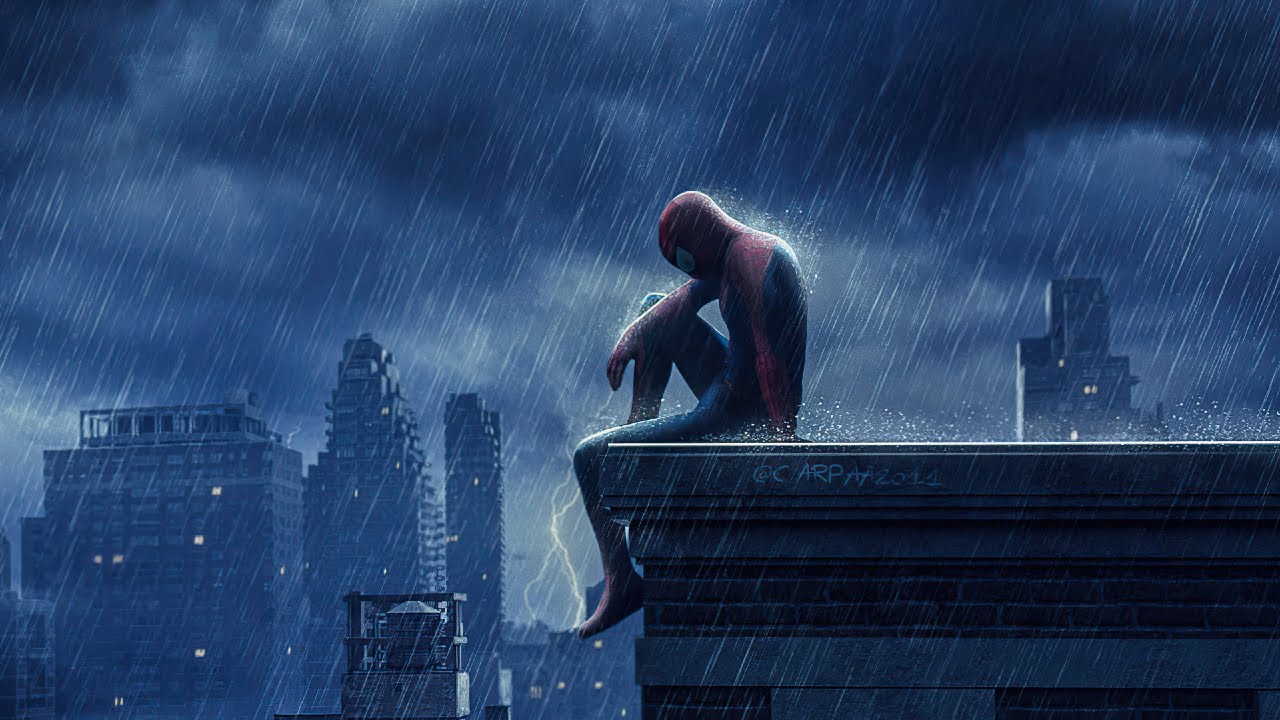
Tom Holland’s version of Peter Parker/Spider-Man, debuting back in 2016 as a secondary character in Captain America: Civil War, hasn’t disappointed thus far. His two solo ventures were some of the best superhero flicks I’ve seen in a while, its youthful exuberance grounding a coming-of-age story for the teen hero. But I was left with no lingering question or unturned message besides the clear-cut cliffhanger, which leaves open more a plot element than a thematic residual.
No Way Home shines with its performances, all around. Holland does a brilliant job, teetering that line between believable, teenage naivety and adult burden. He carries each scene with that spark of hope in what he does and how everything will be okay. Especially by the end, after Aunt May (Marisa Tomei) dies, you see the darker side start to gleam through; the side we’ve seen in many different versions after Spider-Man loses a loved one. But he comes back to who he is by the end, giving a nice flow in an emotional range that I was happy to see portrayed.
SPOILER’S HERE; DON’T CLICK UNLESS YOU’VE SEEN THE MOVIE
Bringing back Andrew Garfield and Tobey Maguire was such a smart decision. The way it was written, coming in the last 30 minutes or so to help Holland’s Peter grieve and finish what he started with the villains, was so respectful of the character as a whole. It doesn’t overcrowd Holland’s Spider-Man or diminish his role. He doesn’t heel to them, like those expecting the return of past Spidey’s believed would happen. The characters work with each other while pushing the story, instead of bringing it to a screeching halt to have these moments. Garfield got to finish what he started, bringing that devotion and passion he’s always had, while Maguire got his chance to shine once more amongst the legacy he helped create for the character. Both actors did great work in this, from the emotional peak on the top of the school to the funny banter in the lab to their action scenes where they (again, SUPER RESPECTFULLY) bring up some nostalgia over their depictions. Maguire’s Peter reconnecting with Otto, Garfield’s Peter finally having that heart-to-heart with Electro, these were capping off moments for these guys’ franchises and it couldn’t have been handled better.Molina and Dafoe are still brilliant as ever, bringing back that classical actor-nuance to what many consider the greatest supervillain depictions ever. They slip into the roles again with ease, it seems, but continue to build on it here as they are given the opportunity to interact with not just a different version of Peter Parker/Spider-Man, but with other foes who have faced a Spidey in some way. Foxx is (dare I say) electric in his performance this time around. He poses a more serious threat with his clear, thought-out desire, which was a problem I had with his character in Amazing Spider-Man 2. Church and Ifans only appear through voice and archive footage, but their addition wasn’t meaningless. Sandman played off Electro pretty well, as the guy who isn’t bad but just wants to go home. And the Lizard actually had some decent lines as he forebodes “dire consequences” for Peter’s actions. When all of them are in the “dungeon” and they’re discussing their exploits as bad guys, it was felt like the reverse of the Avengers meeting each other for the first time back in 2012.
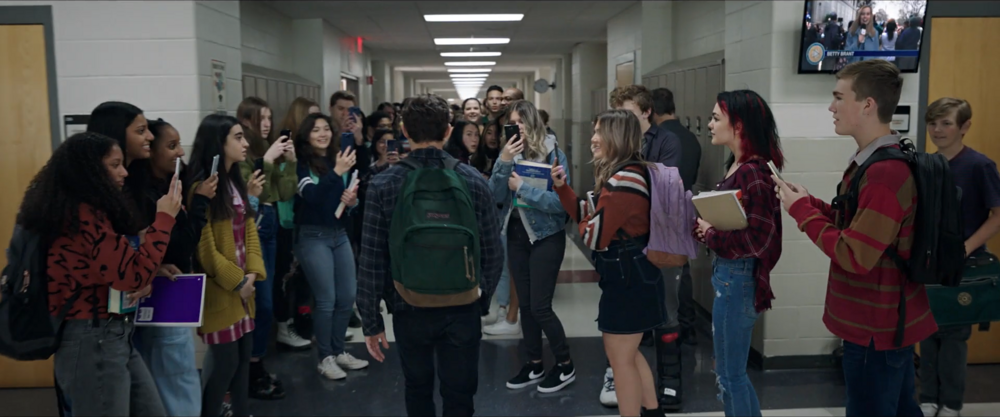
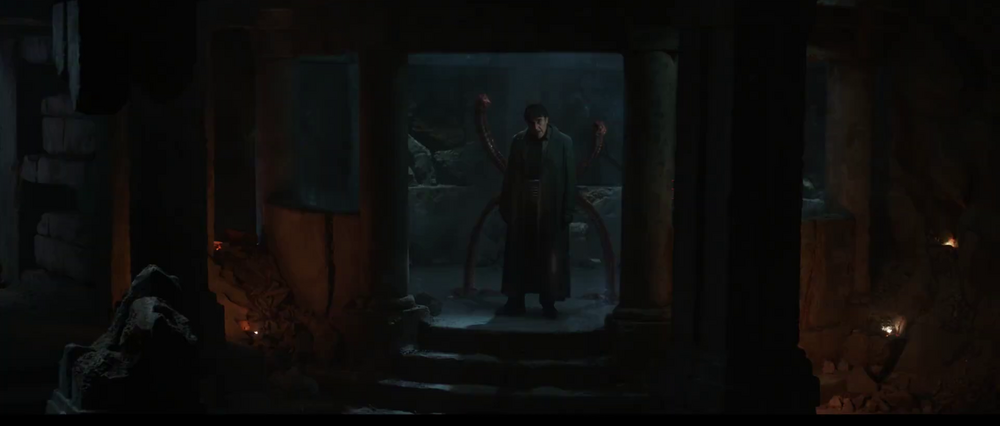
I like the delicate balancing act that director Jon Watts, along with the writers Erik Sommers and Chris McKenna, play in this. It very well could’ve teetered into the same problems the previous “last” Spider-Man films had that I mentioned, but it navigates that similar landscape well. Everyone gets their chance to speak, a clear “top” villain emerges, and there are chances to breathe and connect with the imagery that we see (because it’s all so pretty damn cool). The plot is such a Spider-Man tale, at its core. Only the character of Peter Parker, especially the clumsy but good-intentioned one in the MCU, could find himself in this sort of situation where he must go around rounding up bad guys for Doctor Strange after trying to help his friends.
The action pieces felt different compared to the previous Spidey flicks, particularly the end where everyone is swinging around and jumping across scaffolding to get around. There’s a fluid motion of the camera that Raimi introduced that I always felt was integral to capturing the web-head’s iconic action moves. It was always a bit lacking in Homecoming and Far From Home started getting there, especially in its final London battle. Now, the camera swings and moves with Spider-Man, following his punches and web-slinging combat. The fight in Happy Hogan’s (Jon Favreau) apartment building brought me back to Raimi’s visual hand-to-hand combat style in his movies. The punches felt real, landing on a cackling Norman Osborn’s face. The fight with Doctor Strange in the Mirror Dimension was visually awesome, but it fell flat at certain points. In some places, it was like a VR video game that someone made in an Unreal Engine for the first time. But when it was up-close and personal between Strange and Peter, it was more connective with the visual effect playing out in the background.
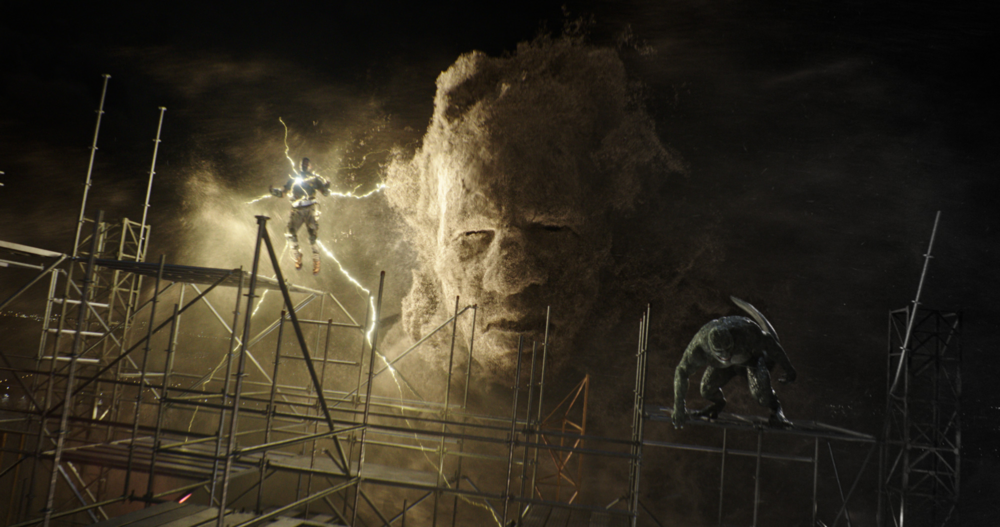
Many reviewers said that the film relies on nostalgia to “trap” viewers into thinking this is a good movie. And sure, it’s not made with the same visual flair that Raimi did over 20 years ago. But it’s new, it’s different, certainly. The idea that this movie relies solely on fan service is ridiculous. Any casual fan, even those who have never seen the Raimi or Webb movies would have some recognition of the returning characters. And even if the audience had no recollection of the past franchises, the movie does a good job reintroducing everyone. The scene between Doc Ock, Peter, and Strange in the dungeon was a great way to bring up the different universes and the situation they’re in. We’re reminded of their original motivations, and the new ones they make when they ingratiate themselves with the MCU. It doesn’t rely on nostalgia, but it certainly helps to get greater enjoyment from it all.
This was such a wonderful journey to watch unfold. From beginning to end, you get the feeling of helplessness that Peter struggles with after his identity is made public and his attempts to rectify it. He watches it affect everything about his life, both as Peter and as Spider-Man, with a touching scene on the roof of the school at the beginning to encapsulate that. And, in the final moments of the film, when he tells Strange to make everyone forget him to prevent the effects of the original spell, that helplessness turns into maturity, ownership. Peter, along with everyone in the audience, now understands the meaning of all he has learned at this point in the trilogy. Remember when I said that trilogies work best when there is an underlying theme or point?
This was it: the burden of responsibility. In Homecoming, Peter has to get over his Avenger-sized aspirations and “lower” himself to the responsibilities of a “Friendly Neighborhood Spider-Man”. With Far From Home, he accepts the mantle of responsibility as a superhero, learning that he can’t stop the heroics just because it interferes with his personal life (a similar lesson learned in Maguire’s Spider-Man 2). And now, in this movie, Peter is directly responsible for bringing these villains here and must sacrifice his own existence to restore everything back to normal and send everyone home.
It helps that he had some friends (and variants 😉 ) to work this out with, plus the dying words of Aunt May, who cemented herself beautifully in her ‘Uncle Ben’ moment: With Great Power comes Great Responsibility.
I swear to God, the ~~CHILLS~~ I got when she said those words could be felt in the row behind me. That’s when I knew that all the naysayers’ hate on the franchise for not having an Uncle Ben figure would shut their mouths. This Peter has an Aunt May, goddamnit.
The ending really works as a soft reboot, further adding to the tragedy and hardship Peter takes on as he does the right thing, in costume and out. His secret identity restored, at the cost of losing all his friendships, was such a hard thing to accept that this was the next phase of his character but I’m more than excited to see this play out. I would like to see someone else take over for another set of movies, just to bring something new to go along with this new segment in Peter’s life.
Spider-Man: No Way Home knows what it is: a story of a kid with superpowers learning to do the right thing. It may have taken him a while, but he got there. And, along the way, we saw some amazing fight scenes, great character interactions with brilliant performances, and just had a load of fun. That’s what this was: fun, with some heart.
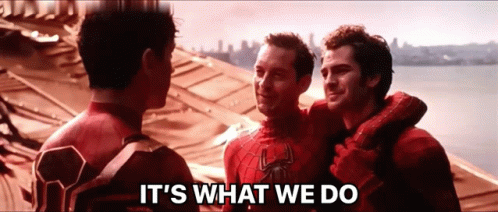
Edited: October 15, 2022
